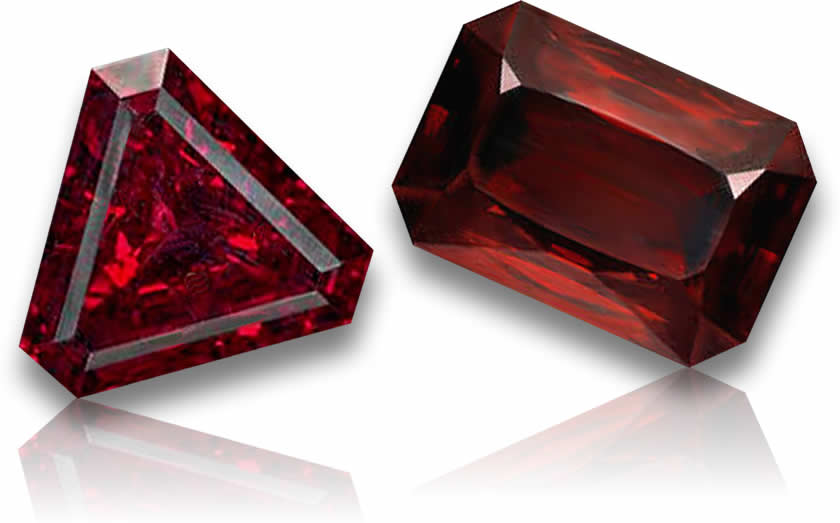What can I find in this article?
- Cuprite Gemstones
- Cuprite Color and Appearance
- Cuprite, Unique Earthy Metalic Luster
- Origins and Deposits of Cuprite
- Historical Significance
- Healing Properties of Cuprite
- Cuprite Healing and Well-being
- Rare and Limited, Value of Cuprite
- Jewelry and Artistic Use
- Cuprite’s Crystal Structure
- Cuprite Care and Maintenance
- Cuprite Properties
Cuprite Gemstone Information - Find Details and Images here
Cuprite is a vibrant red mineral and gem known for its striking color and high refractive index. It's prized for its beauty in jewelry and admired for its metaphysical properties.
Cuprite Gemstones, a Little-Known Crimson Splendor

Amidst a vast array of minerals and gems, cuprite is a unique specimen prized for its rich crimson hues. It is known for its deep color and timeless beauty that has captivated mineral and gemstone collectors for centuries and the world for thousands of years. Cuprite is also known as 'red copper' and 'ruby copper' because of its striking red hue and stunning metallic luster.
This mineral and gem are available in a matrix, crystal form, and other minerals in rock specimens. With such a stunning array of varieties comes an endless number of final preparations that allow the gem and mineral to appear in all kinds of jewelry, design, and decorative applications.
In this article, we delve into the world of cuprite, exploring its characteristics, origins, and fascinating facts that make it a gem of enduring allure and endless possibilities.
Cuprite Color and Appearance
Cuprite gemstones and minerals are celebrated for their deep red to reddish-brown coloration, resembling the vivid hue of freshly bloomed roses. The cabochon and faceted gemstones look stunning in rings, pendants, and earrings and are usually the centerpiece of more modern or minimalist wire-wrapping jewelry designs.
The gemstone's intense and fiery tone evokes a sense of passion and vitality, making it a compelling choice for jewelry connoisseurs, especially those searching for stones with a uniquely rough appearance.
Cuprite mineral specimens are sought-after for their hues in combination with other minerals. Cuprite often appears with white or green minerals adding to the stunning contrast of the mineral specimens.
Cuprite Gemstones Unique Earthy Metalic Luster
One of cuprite’s most unique qualities is its luster which has a sub-metallic earthy quality giving it a very unique appearance.
Origins and Deposits of Cuprite
Cuprite exists worldwide, with deposits in Russia, Namibia, the United States, Australia, and Chile. Some of the most renowned sources include the Ural Mountains in Russia, where cuprite was discovered in 1845, and the Tsumeb Mine in Namibia.
Historical Significance and The Origin of Cuprite’s Name
Cuprite holds historical and cultural significance in various civilizations. Its popularity as a gemstone and ornamental material has withstood thousands of years. Ancient Egyptians considered cuprite to be a symbol of life and vitality. In Native American cultures, cuprite was a stone of strength and protection.
Cuprite’s name is a derivative of the Greek word kypros which means, "Cyprus" This is a reference to the island of Cyprus, where the mineral was found.
Metaphysical Healing Properties of Cuprite
Cuprite possesses powerful metaphysical properties. It is associated with grounding energy, promoting vitality, and enhancing the flow of life force energy within the body. Cuprite also stimulates passion, courage, and determination. It also encourages the pursuit of goals and ambitions.
Cuprite Healing and Well-being
Cuprite has physical and emotional healing properties. It supports the circulatory system, aiding in blood purification and circulation. Cuprite is also said to promote emotional healing by assisting in releasing emotional blockages, fostering self-acceptance, and enhancing self-confidence.
Rare and Limited Availability - Value of Cuprite
While cuprite isn’t well known like some other gemstones, its limited availability adds to its allure. High-quality cuprite gemstones are relatively rare and are challenging to obtain, making them highly sought after by gemstone collectors and enthusiasts.
While cuprite isn’t well known like some other gemstones, its limited availability adds to its allure. High-quality cuprite gemstones are relatively rare and are challenging to obtain, making them highly sought after by gemstone collectors and enthusiasts.
Jewelry and Artistic Use
Cuprite's deep red color and unique metallic luster make it a favored choice for fine jewelry and artistic creations. It is perfect for statement pieces such as rings, pendants, and earrings, where its captivating color can take center stage. Cuprite is also utilized in sculptures and decorative art, showcasing its remarkable beauty and evocative energy.
Cuprite’s Crystal Structure
Cuprite belongs to the oxide mineral group and has a chemical composition of copper(I) oxide (Cu2O), and its copper content lends cuprite its red hue. It crystallizes in the cubic system. The gemstone can also occur in massive or granular forms, showcasing its deep red coloration and striking metallic luster.
Cuprite Care and Maintenance
Cuprite gems are similar to most gemstones and require gentle care to maintain their beauty. As cuprite has a hardness of around 3.5 to 4 on the Mohs scale, it is susceptible to scratches, so protecting it from striking hard materials is critical.
We recommend storing your cuprite jewelry separately from harder gemstones and avoiding exposure to harsh chemicals and extreme temperatures.
Cleaning with a soft cloth and mild soapy water is sufficient for regular maintenance.
Cuprite Properties
|
Category: |
Oxide Mineral |
|
Color: |
Dark red to red, sometimes almost black |
|
3.5 - 4.0 |
|
|
2.849 |
|
|
Luster: |
Adamantine, sub-metallic, earthy |
|
6.14 |
|
|
Transparency: |
Transparent, translucent |

